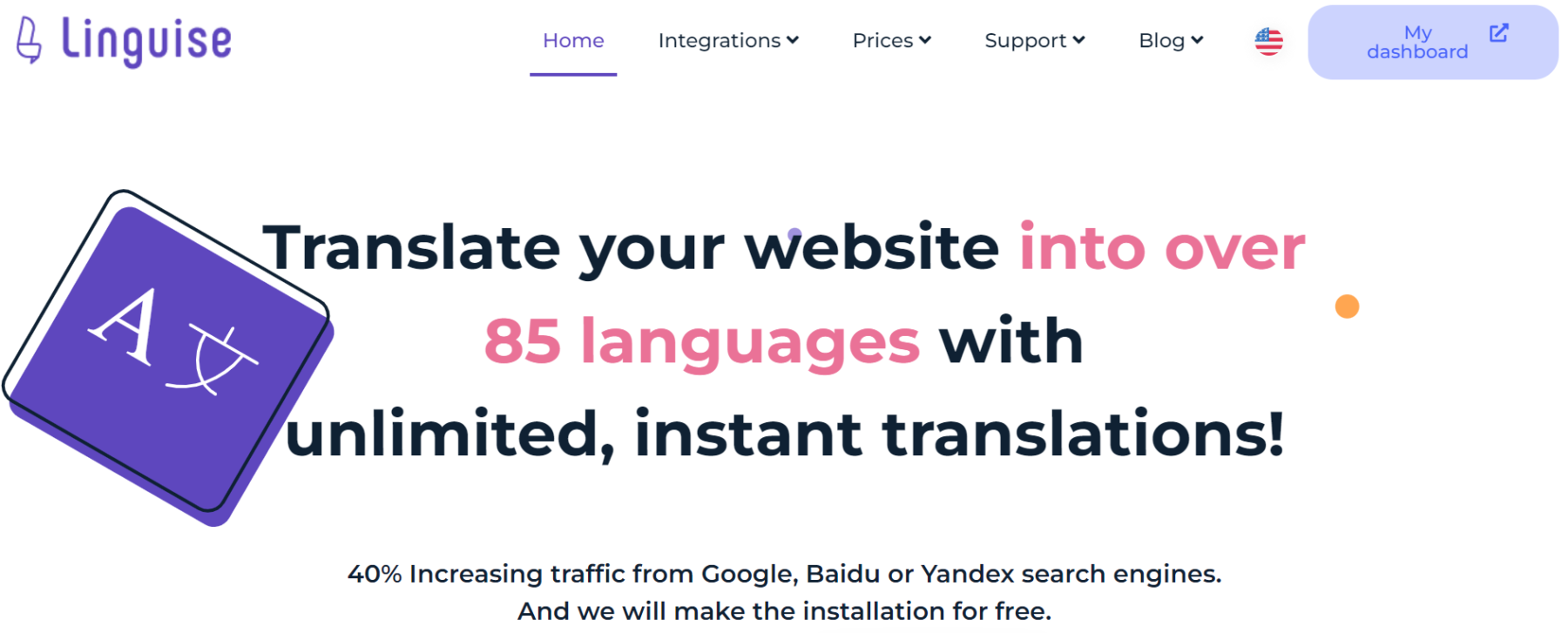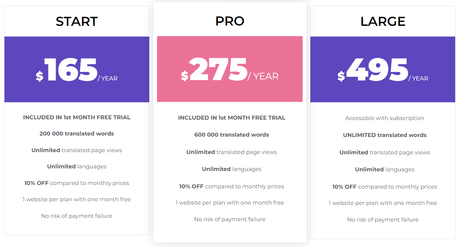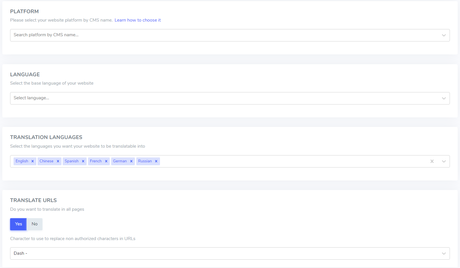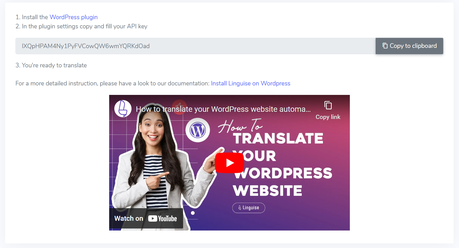
There are 7000+ languages in our world; English is just one of them.
The Internet is ever-expanding, and as it expands, we are witnessing a diverse audience. To capture such an audience you need to make your website accessible for them.
Creating separate content in different languages won’t be practical, that’s why we have translation. Thanks to technology, translation has become way more easier and affordable. In this article, we will be featuring a WordPress translation plugin – Linguise; that helps you automatically translate WordPress website.
With Linguise you can translate your website into 85+ languages, and with any plan, you get one-month free Linguise, in which you can translate 600,000 words for free!
More about that later, but let’s see what are benefits of translation are.
Why do You Need to Translate WordPress Site Automatically
We have seen that there are major pros of translating a website, some of the benefits worth mentioning are:
- Improved SEO
- Accessibility to a wider audience
- More visitors
- Increase in conversions
1. Improved SEO
The main job of the search engine is to provide the information the user is looking for. If a non-English speaker is looking for an article related to blockchain, they won’t get any benefit from seeing articles on blockchain in the English language.
As they can only read in their native language.
That’s why ranking on blockchain may be hard in the English language but it is easier in the Chinese language.
Once you translate the same content into other languages, you start getting ranked in those keywords, eventually improving your overall SEO.
2. Accessibility to a wider audience
Only 13% of the world’s population are English speakers, and only 5% of them are native speakers. Seeing the stats, you might have understood the problem of non-English speakers: Access to the majority of the internet.
Creating content in other languages makes your website accessible to them.
3. More Visitors
Having more content on your website in multiple languages will surely result in an increase in visitors. Hence, it is worth investing in a good translation.
4. Increase in Conversion
It is obvious that if your website is accessible to a more diverse audience, it will increase your audience and eventually customers. Reading content in their native language will help them understand your content better.
Related – Top 8 Tech Skills to Increase Conversion Rates
Choosing a Solution for Translating Your WordPress Site
For automatically translating WordPress websites, we have three popular options. Let’s look at them:
- Hiring a translator
- Using automatic translation tools
- Using WordPress Plugin
Let’s look at the pros and cons of each available option.
1. Hiring a Translator

- Perfect translation by understanding the context
- Use of slang and human-like translation
- Best if you are looking for conversions.
- It is costly to hire a translator (increases overall project costs)
- Slowest method compared to other
You can hire a human translator from websites like Upwork, Fiverr, Gengo, or LinkedIn.
2. Use of Automatic Translation Tools

- Cheapest method
- Translates instantly
- Supports many languages
- Best for websites looking for a plain translation in the cheapest way
- The only con of such tools is they provide loose translation, and they aren’t so accurate.
You can use automatic translation tools such as Google Translate, Bing Translator, or Yandex Translate.
3. Using WordPress Plugins

- Affordable method
- Translates almost instantly
- Supports various languages
- Best for websites looking for quality translation at affordable prices
- No major cons, only needed a human proofreader for 100% quality assurance.
You can use WordPress plugins such as GTranslate, Linguise, or Weglot.
You can choose any method according to your website needs and requirements. We believe that various websites that cater to international audiences, who want good-quality translations can use WordPress plugins and Human proofreaders.
WordPress plugins are quite affordable and provide good-quality translation, however, to attain a perfect level of translation you can hire a freelance proofreader.
In this article, let’s review Linguise a WordPress translation plugin.
How to Automatically Translate WordPress Website Using Linguise?

Overview: Linguise is a paid translation plugin that lets you translate into 85+ languages. They offer a month free trial period; in which you can translate 600,000 words in any language. Additionally, Linguise is highly SEO-optimized; it helps increase 40% traffic from Google, Baidu, and Yandex search engines.
Features
- 85+ languages supported
- 1 Month Free Trial (No credit card required)
- Linguise uses high-quality neural translation
- Free Installation
- Linguise uses an advanced cache system for multilingual content that doesn’t let your website slow down
Apart from this, their pricing plans are monthly and yearly.
Linguise Pricing Plans

Annual plans are 10% cheaper than monthly plans.
Additionally, you get 1 month free with every plan (except the large plan), in that free month, you can translate 60,000 words.
- Monthly Plans start from $15 a month that lets you translate 200,000 words.
- Annual Plans start from $165 a month and offer 200,000 words translation
*check out their latest pricing before purchasing.
How to Install Linguise Plugin
Here is how you can automatically translate the WordPress website with Linguise, we have divided the process into two parts and some easy steps.
Part 1 – Registration
- Create a Linguise account using the following link – https://dashboard.linguise.com/account/register
You can register in two steps, in step one you have to provide the following information.

- Register your name and domain address
- Platform – Add your CMS name, in our case it is WordPress
- Language – Select the language of your site, in which you write content, for eg. English
- Translation – In which languages do you want to translate your site, on Linguise you get 85+ languages.
- Translate URLs – If you want to translate URLs as well, select ‘Yes’, it is good SEO practice to translate URLs.
Tap on Next to go to Step Two.
- In step two, just copy the API key.

Part 2 – Installation
- Go to your WordPress website’s dashboard > click on Plugins
- Search for Linguise
- Click on Install > Activate Link
- Tap on the left menu Linguise, paste the API you’ve copied in the API key

- You have successfully connected your website with Linguise!
- Review your settings and language switcher
Final Words
There are many benefits of translating your website pages and thanks to technology it is easier than ever. Moreover, choose the best method according to your website needs.
Hiring a human translator can be the best if you have a few pages and want a perfect quality translation. If you are looking to translate the whole website, using a plugin can be the best option for your website.
Drop your comment if you have more to share, we are looking forward to your comments!
Frequently Asked Questions
1. Are WordPress Translation Plugins SEO-Compatible?
Many paid WordPress plugins are SEO Compatible, SEO-Compatibility simply means translating URLs, Image alt text, metadata, etc. Additionally, if a translation plugin doesn’t affect page loading speed, we can say it is completely SEO-compatible.
2. What to Translate in WordPress Website
Translation is not just about pages or posts; to translate your website SEO-optimally, your WordPress plugin also needs to translate the following data –
1. Content
2. URLs
3. SEO Metadata
4. Images and Image Alt Text
5. Subdomains
6. Tags and Categories
